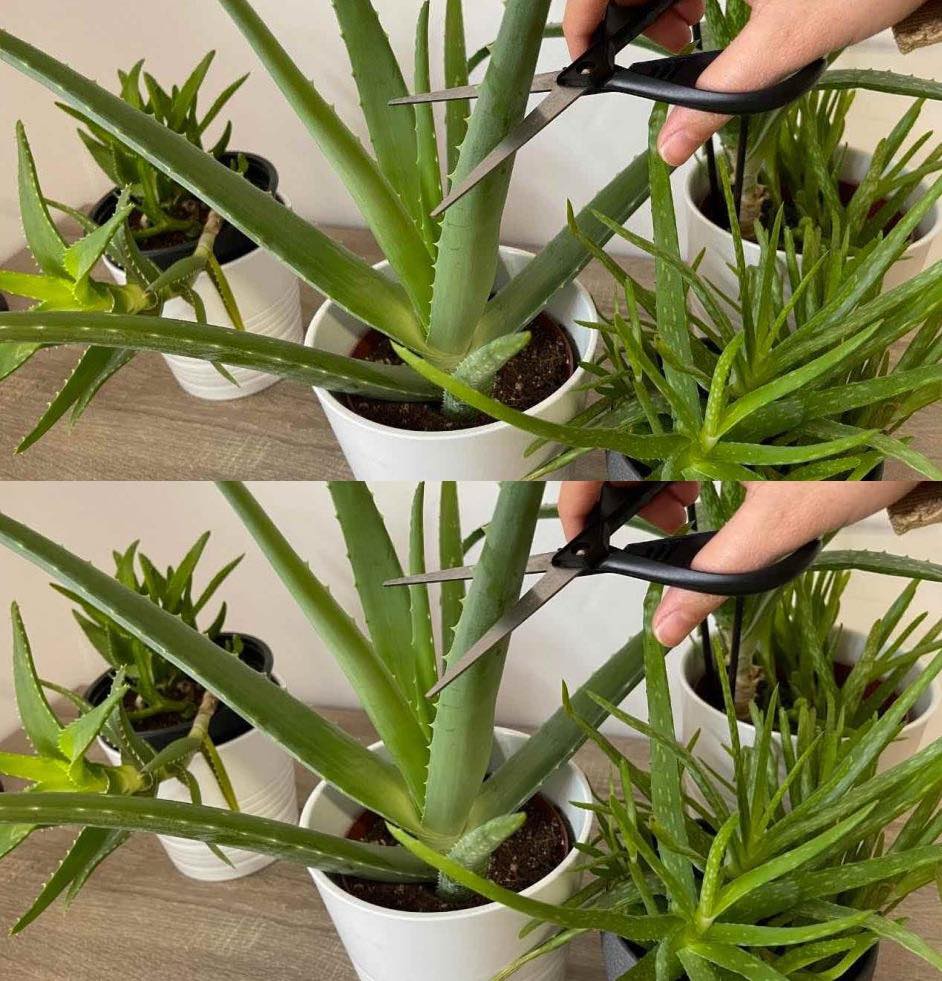Aloe vera plants are renowned for their medicinal properties and stunning succulent foliage. These hardy plants are relatively low-maintenance, making them popular choices for both indoor and outdoor gardens. However, even with their resilient nature, there are common mistakes that many plant enthusiasts unknowingly make when caring for their aloe vera plants. In this article, we’ll shed light on these mistakes and provide you with valuable insights on how to properly care for your aloe vera plants.
Mistake 1: Overwatering
One of the most common mistakes with aloe vera plants is overwatering. While it’s important to keep the soil moist, aloe vera plants prefer drier conditions compared to other houseplants. Overwatering can lead to root rot and other issues, causing the leaves to become mushy or turn yellow.
Solution: Allow the soil to dry out between waterings. Check the moisture level by sticking your finger about an inch into the soil. If it feels dry, it’s time to water. Water thoroughly, ensuring that excess water drains out of the pot. Avoid letting the plant sit in standing water, as this can contribute to root rot.
Mistake 2: Insufficient Drainage
Another common mistake is using pots without proper drainage. Aloe vera plants are susceptible to root rot if their roots sit in waterlogged soil for extended periods.
Solution: Choose a well-draining potting mix specifically formulated for succulents or cacti. Ensure that the pot has drainage holes to allow excess water to escape. If you have a pot without drainage holes, consider repotting your aloe vera plant into a container that provides adequate drainage.
Mistake 3: Inadequate Sunlight
Aloe vera plants thrive in bright, indirect sunlight. Insufficient light can result in stretched-out, leggy growth and pale leaves.
Solution: Place your aloe vera plant in a location that receives bright, indirect sunlight for at least 6-8 hours a day. South- or west-facing windows are ideal. If you’re growing your aloe vera plant indoors, consider using grow lights to supplement natural sunlight.
Mistake 4: Lack of Air Circulation
Aloe vera plants benefit from good air circulation, as stagnant air can promote the development of pests and diseases.
Solution: Ensure that there is adequate airflow around your aloe vera plant. Avoid overcrowding plants and provide space between them. If growing indoors, use a fan on low setting to improve air circulation.
Mistake 5: Using the Wrong Pot Size
Using a pot that is too large for your aloe vera plant can lead to waterlogged soil and root rot. Conversely, a pot that is too small restricts root growth and can cause the plant to become root-bound.
Solution: Choose a pot that provides a snug fit for your aloe vera plant’s roots, with a bit of room for growth. A pot that is 1-2 inches larger in diameter than the plant’s current pot is usually sufficient.
Mistake 6: Neglecting Fertilization
While aloe vera plants don’t require frequent fertilization, neglecting to provide them with essential nutrients can result in stunted growth and a lack of vitality.
Solution: Feed your aloe vera plant with a balanced, water-soluble fertilizer formulated for succulents or cacti. Follow the package instructions for the recommended frequency and dilution.

By avoiding these common mistakes and following proper care guidelines, you can ensure the health and longevity of your aloe vera plants. These fascinating succulents will reward you with their striking beauty and potential medicinal benefits when given the right care.
Remember to provide adequate sunlight, allow the soil to dry out between waterings, and use pots with proper drainage. With a little attention to detail, your aloe vera plants will thrive and become a stunning addition to your indoor or outdoor garden.
Please note that while the information provided in this article is based on general guidelines, individual plant care may vary. Factors such as climate, specific aloe vera species, and environmental conditions can influence plant requirements. Always observe your plants closely and make adjustments based on their individual needs. Happy aloe vera gardening!
